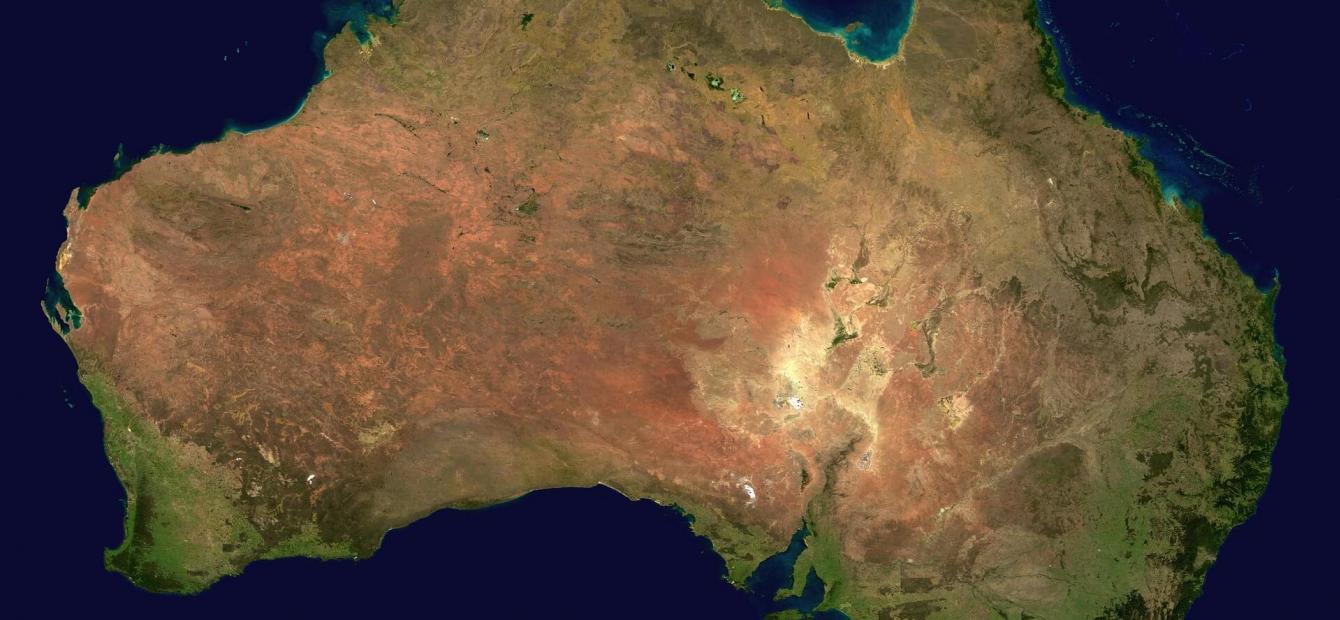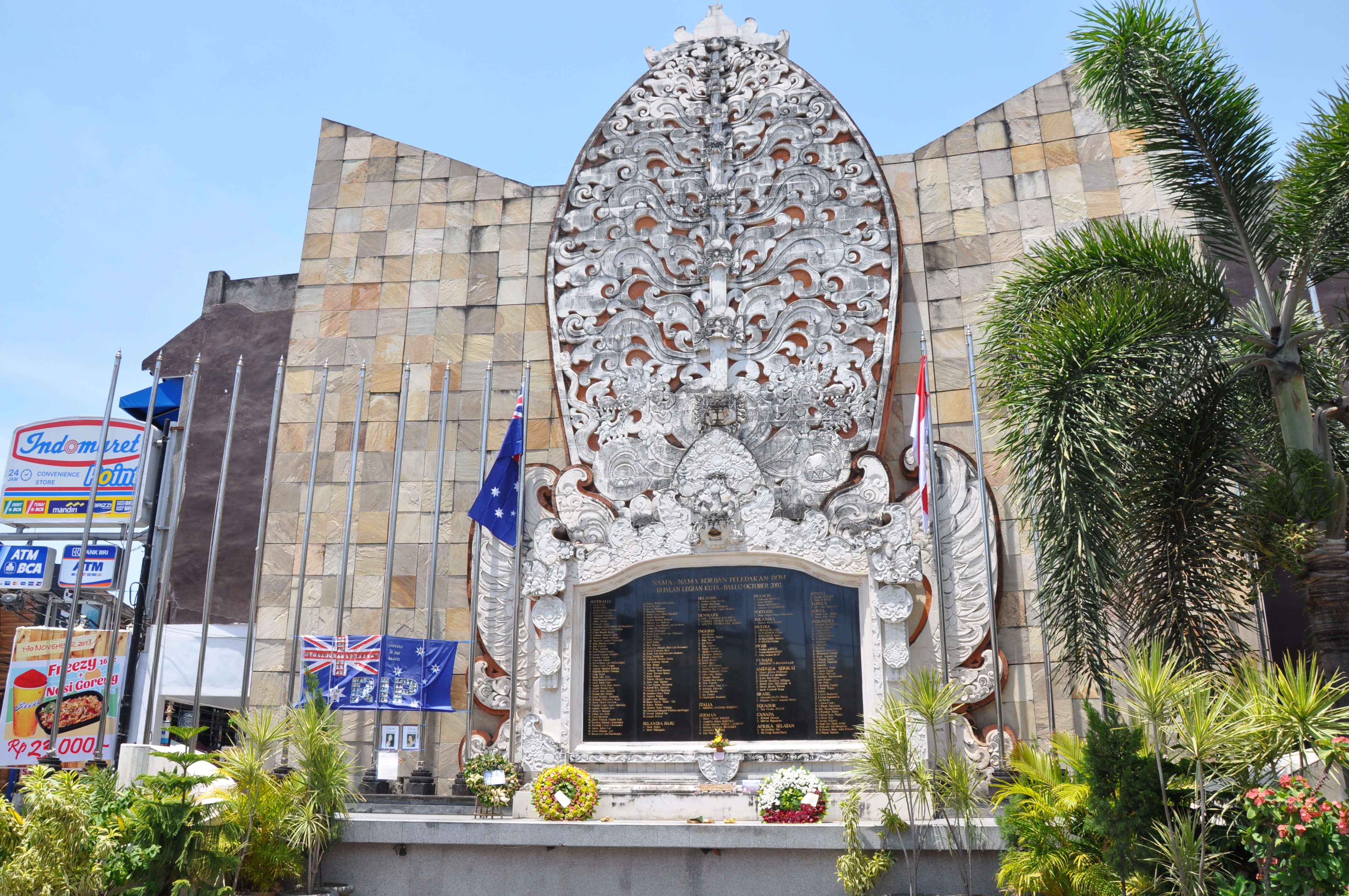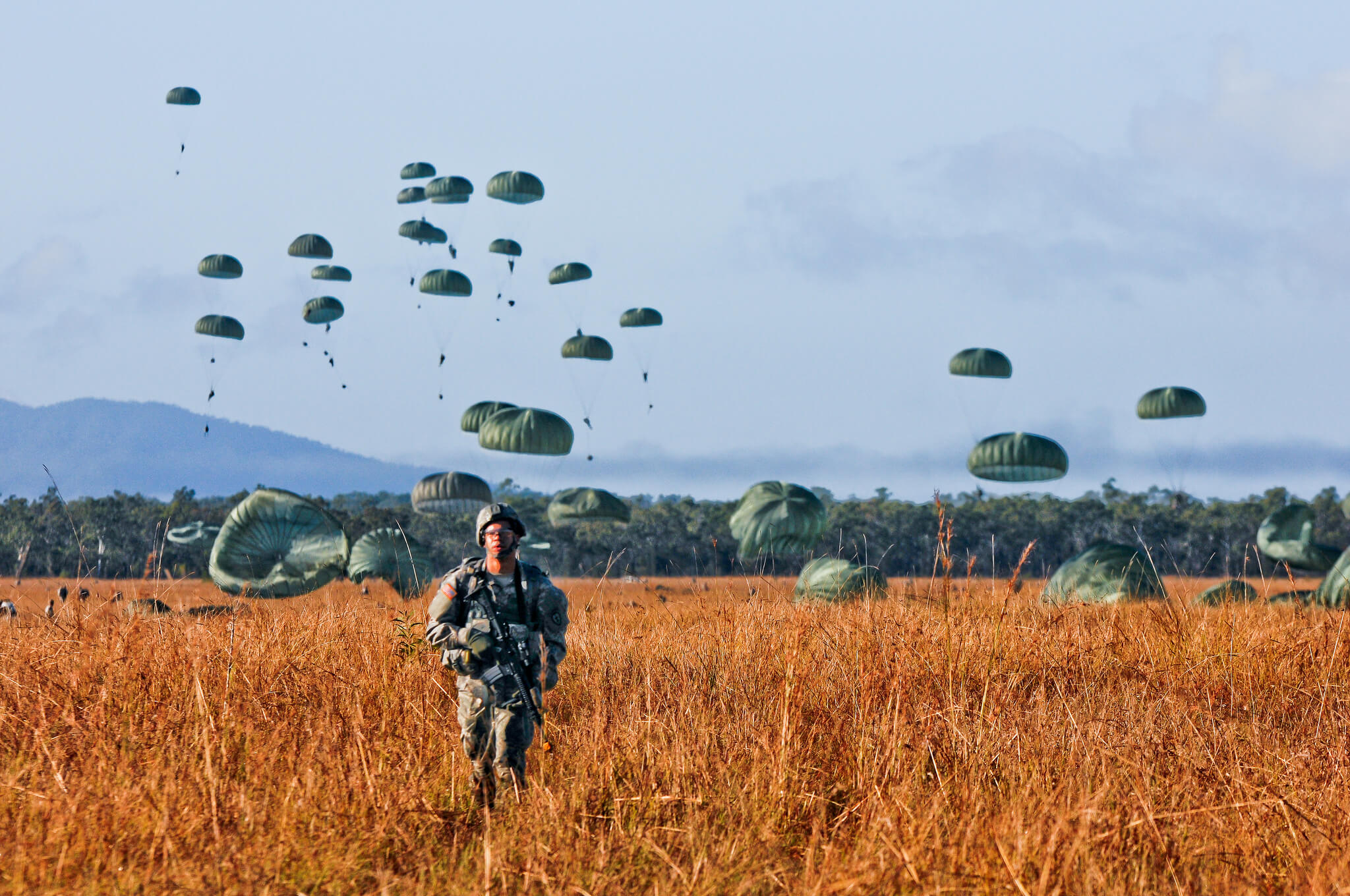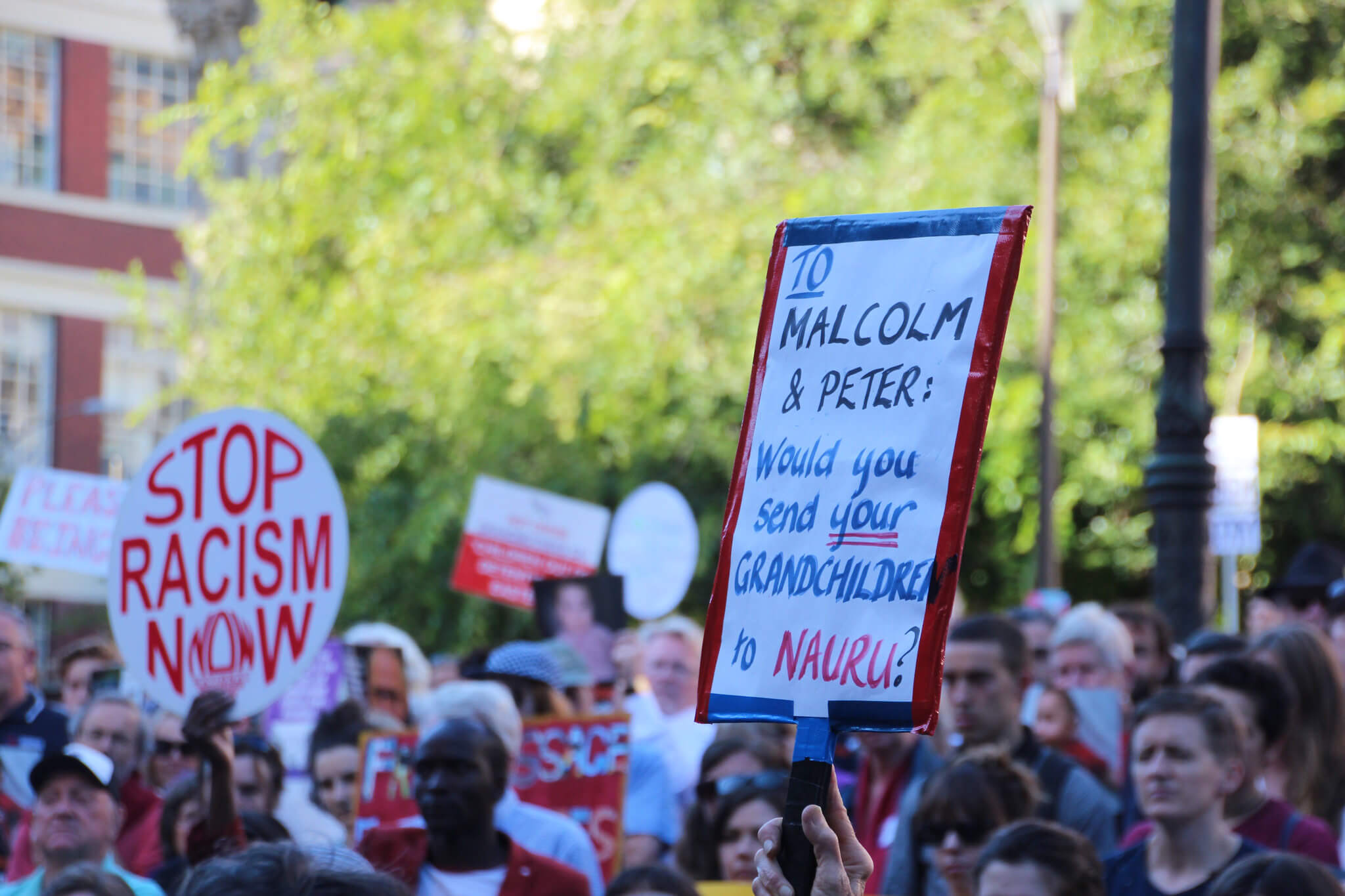
Oceania: Australia’s fear of abandonment
Australia is a country trying to find its place in the world gravitating towards multiple centres of power and a pivot to Beijing. In the third and final part in a series on Oceania, analyst at the Australian International Cyber Policy Centre Bart Hogeveen analyses Australia’s foreign policy in the Chinese Century.
It is the morning of 9 November 2016 when the news of Donald Trump winning the US presidential elections strikes home in Australia. Prime Minister Malcolm Turnbull is one of the first world leaders to convey his gratulations to Trump and assures that “Americans understand that they have no stronger ally, no better friend, than Australia”. 1
Some three months later, on 28 January, Trump and Turnbull have a scheduled phone call. Turnbull stresses the similarities in their corporate backgrounds before he addresses the topic of the resettlement agreement for people who illegally tried to reach Australian soil and are held at two detention centres, in Nauru and Manus. The Australian government had agreed with the Obama administration that the US would take in up to 1250 people. Trump reacts agitated, calls this a “stupid deal” and before the phone conversation is concluded qualifies this “the most unpleasant call [of] all day”.2
Since the call debacle, Australia has tried to refind the favour of the White House. Even mutual friends of the two leaders, ex-golfer Greg Norman and media tycoon Robert Murdoch, were dispatched to ease tensions. What explains the Australian forgiveness and its attempts to downplay Trump’s brusque treatment?3
This stance may be explained by an angst that the continent will be forced - again - to stand on its own feet rather than to rely on the leadership of others. Australia is an island nation (geographically, economically, maybe culturally) and very conscious of the fact that it is not a natural partner in any grouping of countries block, while very much dependent on the likes of great powers for political, military (US) and economic (China, Southeast Asia) reasons. At least, this is the prevalent perception.4 This ‘fear of abandonment’ is also the title of a recent book by Allan Gyngell, a former senior Australian diplomat and former director of the Lowy Institute, Australia’s foreign affairs think tank. 5
What explains the Australian forgiveness and its attempts to downplay Trump’s brusque treatment?
When judging Australia’s foreign policy one should take a look at the actors shaping it. While in most European countries, foreign policy is the prerogative of the foreign ministry, this is less the case in Australia. It is more of a joint effort between the Department of Defence and the Department of Foreign Affairs and Trade, which also houses international aid (AusAid).
Australia, Indonesia and the Netherlands
Back to Gyngell’s book. He describes the history of Australia’s foreign policy in a chronological way which only starts during the Second World War. Up until then, foreign relations were taken care of by the Commonwealth Government in London. Australia gained “full sovereignty over its international policy” in 1942. The emergence of an Australian external relations policy that would have Australian interests in mind coincided in time with Indonesia’s struggle for independence from the Netherlands.
While the British Commonwealth put their weight behind The Hague, Australian leaders observed, felt and forecasted that Dutch control was untenable and that Australia was compelled to throw its support behind Indonesian independence. Or in other words: a safe, secure and stable Indonesia was of greater interest to Australia than to London; while the relationship with The Hague was - at that time – perceived as expendable to Canberra.6

This determining moment for an Australian foreign policy set the tone for the centrality of Indonesia. While the two neighbours have had their ups (great senses of solidarity after the Bali bombing in 2002 and in post-earthquake responses in 2004) and downs (independence of Timor-Leste in 2002, exposure of Australia spying on Indonesia’s president in 2013), Indonesia features prominently in today’s Australia’s foreign policy. It is a “close neighbour and partner for first order importance” with cooperation across the broad range of political, defence, security, trade and development portfolios. Yearly, Australia spends about 316 million AUD from its 4.2 billion aid budget in Indonesia, making it its largest bilateral aid programme.7
The Trump-Turnbull phone call in early 2017 touches on two other determinants of Australia’s external relations, and which currently put Australia’s foreign policy under serious stress: the relationship with the US and the struggle against illegal migration.
“Mateship” with the US
Indonesia is important, but the alliance with the US is the true cornerstone of Australia’s foreign policy. This friendship began on the European Western front 100 years ago during the Battle of Hamel. After the Second World War, Australia actively supported the Americans in the fight against global communism (think of Vietnam) allowing Australia (alongside New Zealand) to join the UK-USA Treaty on Signals Intelligence. This Five Eyes intelligence-sharing community matured over the years and intensified during the Global War on Terror.

The luxury of being a member of the Five Eyes community allows Australia an unrivalled intelligence position in the region. By now, this not only includes military affairs, but the cooperation with the US, UK, New Zealand and Canada extends to home affairs, police, counter-terrorism and many other hard and softer security domains, including illegal migration, human smuggling and trafficking.
Reassuring the US of its fellowship in arms (mateship in Australian) has been Canberra’s mantra as it judges the American political and military engagement to be essential for its strategic interest: a rules-based Indo-Pacific region where Australia can trade, has a global platform and is able to keep Australians safe. Not uncommon with other US allies, this implies that Australian forces joined US operations in Iraq and Afghanistan and currently in places like the Philippines and around Syria. But also in other areas, political leaders tend to follow Washington’s line, for instance in considering a withdrawal from the Paris Climate Agreement.8
Reassuring the US of its fellowship in arms (mateship in Australian) has been Canberra’s mantra
Doubt over America’s enduring commitment to the Indo-Pacific region is therefore seen as a threat to Canberra. Despite Obama’s proclaimed ‘pivot to Asia’, trend analyses suggest a declining American influence, only exacerbated under the Trump administration.9 Australia is subsequently seeking other avenues to tighten the US to the region. For instance, it re-engaged in the Quad, the collective of four democratic states in the Indo-Pacific region: India, Japan, the US and Australia. While the Quad includes many pieces of operational cooperation, the overarching goal is to develop a collective push-back against a ‘bullying’ China.10
Illegal migration and migration
The issue of illegal migration over sea is the other recurring topic that challenges Australian diplomats overseas. Australia’s strict migration policy commenced under the Howard government in 2000. Faced with a decade-long consequent inflow of hundreds of refugees sailing creaky boats from Indonesian points of departure, Canberra formulated a policy dubbed “the Pacific Solution”. All asylum seekers who arrive by boat and/or are intercepted are sent straight to offshore processing centres on Nauru, in Papua New Guinea (PNG) or Australia’s Christmas Island.11
Human rights advocates have been very critical of the humanitarian situation in the three regional processing centres. People are living in sea containers in a tropical climate; there is no option for bails, no time limit to their stay and on average asylum-seekers spend a few years in camp.12 The centre in PNG was closed in October 2017 after the Supreme Court considered the facility unconstitutional; the Nauru facility is still operational with 219 detainees.13
“Australia is pragmatic. We do not seek to impose values on others.”
Strong and fierce international criticism of the practice of offshore processing centres, including criticism from senior UN officials 14 , forces Australian politicians and diplomats to spread the message that Australia is also one of the most generous countries in taking in humanitarian refugees. It grants just short of 20,000 visas for refugees registered with UNHCR and others in fear over humanitarian concerns.15
Australia currently sits on the UN Human Right Council (2018-2020) with a progressive agenda looking after the right of women and girls, good governance and freedoms of expression, association, religion and belief, rights for indigenous people around the globe, abolition of the death penalty and promoting national human rights institutions.16 But at the same time, the Foreign Policy White Paper states that “Australia is pragmatic. We do not seek to impose values on others.”17

South Pacific and ASEAN: from patronising to partnering
Australia’s regional outlook can be pictured as having one foot in Southeast Asia and the other in the Pacific. If one were to make a sharp contrast, one could argue that Australia today needs ASEAN (Association of Southeast Asian Nations) for the promotion of its security and economic interests, while it feels a ‘big brother’ responsibility for the Pacific Islands.18
In March 2018, Australia hosted the leaders of ASEAN for a first ever Special Summit meeting in Sydney. It marked a new era in mutual relations that in the past have been marked by the White Australia policy and its reputation as Washington’s “deputy sheriff”. With Southeast Asia having gone through a period of massive economic growth since the start of official ASEAN-Australia relations in 1974, dynamics have changed. Currently, ASEAN countries have replaced the US and Japan as Australia’s most important trading partners.19
Even though ASEAN falls short of being - or developing into - a collective security regime, Australia has come to recognise the organisation’s convening power and ability to facilitate ‘big tent diplomacy’.20 While recent suggestions of Australia joining ASEAN are more of a trial balloon than anything substantive, the recent Special Summit is a testament of Australia seeking a partnership based on trust rather than confrontation.
In the Pacific, China’s efforts to ramp up its profile and posture is touching an Australian nerve. Earlier this year, reports of a military base in Vanuatu supposedly to be built by China sparked a heated debate among Australia’s foreign policy and defence establishment.21 In response, Australia announced its biggest ever aid commitment (over 1 billion AUD), including an undersea telecommunications cable to PNG and the Solomon Islands.22
France seems to emerge as one of Australia’s strategic partners in the Pacific.23 Still being a power of significance possessing territories like New Caledonia, French Polynesia and Wallis and Futuna, President Macron made a landmark visit to Australia earlier in 2018. Paris and Canberra agreed to work together in order to realise a free, open and prosperous Indo-Pacific through “greater maritime co-operation, support for infrastructure in the region, and humanitarian and disaster relief”.24 It indicates the revamping of another relationship with the aim of hedging against US political instability25 and dealing with China’s influence in the Pacific and its claims in the South Chinese Sea.26
Holding a good dozen votes at the UN, the Pacific islands stem to benefit from the interests from various geo-political players.27 Australia does not only face ‘competition’ from China; befriended nations like the UK, France and the US are all ramping up their diplomatic presence.
The above suggests an Australian approach anno 2018 that looks at establishing strong partnerships into Southeast Asia and the Pacific. But will Canberra’s short- and long-term interests align with those of the two regions? In the past, Canberra not always had the region’s interests in mind, as shown by suggestions to withdraw from the Paris Climate Agreement and its obstruction to a new Nuclear Ban Treaty.28
China at home
The China factor was referenced already a few times. It not only plays in Australia’s foreign policy, it is even more dominant domestically. 29
Last year, the book “Silent Invasion” by Clive Hamilton hit the list of best-read books. The book outlines the silent penetration of the United Front Work (Chinese Communist Party) propaganda targeting universities, media corporations, real estate and the political landscape. Considering the fact that there have never been more Australian citizens of Chinese origin, there is the potential of a massive ‘fifth column’ that Beijing could leverage.30
The China debate in Australia is quite polarised. Some are convinced of a deliberate and subversive plan that seeks to undermine liberal Australia and its alliance with the West. Others claim this rhetoric to be simply “alarmist” and stress the opportunities for mutual trade and relations on equal basis.31 The latter camp has strong proponents in former cabinet ministers and prime ministers. But it did not stop the current coalition government from passing more strict espionage and foreign interference legislation as well as boycotting Chinese tech giant Huawei from bidding for internet infrastructure.32
Considering the fact that there have never been more Australian citizens of Chinese origin, there is the potential of a massive ‘fifth column’ that Beijing could leverage.
And….New Zealand
That brings us to Australia’s relationship with New Zealand. While both countries’ defence forces and political leaders are very close, Australia does perceive New Zealand as a smaller - and maybe naive - brother. For instance, Canberra believes New Zealand is taking a far too soft stance towards the strategic threat of China to the region. While NZ-based analysts strongly disagree (including Robert Ayson), these perceptions seem to be pretty solid in Australian foreign policy circles. 33
The difference in approach (appeasing versus assertive) may well be the simple result of available means. The instruments of foreign policy - diplomatic missions (100+ vs 50), regional posture, economic size ($1,200 billion vs 184 billion), armed forces (80,000 vs 7,000), aid budget (A$4.2 billion vs A$2.0 billion) - of the Australians exceed those of the New-Zealanders substantially; and capabilities eventually shape conduit.
Conclusion
In 2017, Australia’s previous government (Canberra just witnessed a silent coup in August)34
presented its Foreign Policy White Paper. The paper describes the changing global dynamics towards a multi-order and provides an aspirational overview across the broad remit of Australia’s foreign policy.
With that, it is a testament of a country trying to find its place in the world gravitating towards multiple centres of power and a pivot to Beijing. While historically Australia has always been preoccupied with aligning with great powers, it may now have to define its middle power role with a greater sense of self-direction and more regional flavour.
- 1ABC, “Malcolm Turnbull, Bill Shorten, Julie Bishop congratulate Donald Trump on presidency”, 9 november 2016.
- 2The Guardian, “Full transcript of Trump’s phone call with Australian prime minister Malcolm Turnbull”, 3 augustus 2017.
- 3The Sydney Morning Herald, “How Trump made up with Turnbull after a ‘most unpleasant call’”, 23 februari 2018.
- 4The Monthly, “Without America: Australia in the New Asia. Making sense of a new reality and the return of power politics (a Quarterly Essay extract)”, 4 december 2017.
- 5Australian Institute of International Affairs, “Reading Room: Fear of Abandonment”, 31 augustus 2017.
- 6Gyngell, Allan, Fear of abandonment: Australia and the World since 1942 (La Trobe University Press, 2017).
- 7Australian Government: Department of Foreign Affairs and Trade, “Indonesia country brief”; Australian Government: Department of Foreign Affairs and Trade, “Indonesia aid fact sheet: May 2018”.
- 8The Guardian, “Australian PM dumps key climate policy to stave off leadership revolt”, 20 augustus 2018.
- 9The Monthly, “Without America: Australia in the New Asia. Making sense of a new reality and the return of power politics (a Quarterly Essay extract)”, 4 december 2017.
- 10The Australian Strategic Policy Institute, the Strategist, “The Indo-Pacific? The Quad? Please explain…”, 9 april 2018.
- 11The Atlantic, “Australia’s Controversial Migration Policy”, 29 april 2016. In a recent case, some 40 Vietnamese got onshore in a crocodile-infested area in Queensland. After they were rescued, they were sent to Christmas Island ‘for processing’ (see ABC, “Suspected asylum seekers found in Queensland spark warnings of exodus from Vietnam”, 29 augustus 2018).
- 12The Atlantic, “Australia’s Controversial Migration Policy”, 29 april 2018.
- 13The Conversation, “Manus detention centre closure sparks safety fears for refugees”, 30 oktober 2017; Australian Government: Department of Home Affairs, Australian Border Police, “Immigration Detention and Community Statistics Summary”, 30 juni 2018.
- 14The Atlantic, “Australia’s Controversial Migration Policy”, 29 april 2016.
- 15ABC, “Fact check: Does Australia run the most generous refugee program per capita in the world?”, 22 februari 2018.
- 16Australian Government, “Chapter six: Global cooperation. Advancing human rights”, in Foreign Policy White Paper 2017.
- 17Australian Government, “Chapter one: Foundations for success”, in Foreign Policy White Paper 2017.
- 18The Guardian, “Australia has neglected its relationship with the Pacific – but that can change”, 25 april 2018.
- 19Australian Strategic Policy Institute, the Strategist, “The ASEAN-Australia summit: Success, but some false leads”, 23 maart 2018.
- 20Lowy Institute, the Interpreter, “Is ASEAN still central to Australia?”, 5 februari 2018; Huong Le Thu, “Australia and ASEAN: Together for the Sake of a New Multipolar World Order” (Security Challenges 14:1, 2018).
- 21The Conversation, “Response to rumours of a Chinese military base in Vanuatu speaks volumes about Australian foreign policy”, 11 april 2018.
- 22ABC, “Budget 2018: Government announces biggest ever aid commitment to Pacific”, 8 mei 2018.
- 23See: Fisher, Denise, France in the South Pacific: Power and Politics (Australian National University Press, 2013).
- 24The Sydney Morning Herald, “Australia and France to step up co-operation in the Pacific”, 2 mei 2018.
- 25The Diplomat, “France in the Pacific: Growing Strategic Ties with Australia”, 16 oktober 2017.
- 26ABC, “Emmanuel Macron is visiting Australia – will Malcolm Turnbull ask for tips on how to handle Donald Trump?”, 30 april 2018.
- 27Dame Meg Taylor, Secretary General of the Pacific Islands Forum, keynote address at the State of the Pacific conference at the Australian National University, 10 september 2018.
- 28The Guardian, “Australia has neglected its relationship with the Pacific – but that can change”, 25 april 2018.
- 29Channel9, 60 Minutes series, “The China Syndrome”, 17 juni 2018.
- 30Financial Review, “Our complex relationship with Chinese Australians”, 9 januari 2016.
- 31The Conversation, “Book Review – Clive Hamilton’s Silent Invasion: China’s Influence in Australia”, 21 maart 2018.
- 32Council on Foreign Relations, “Expert brief: Australia, New Zealand face China’s influence”, 13 december 2017.
- 33Australian Strategic Policy Institute, The Strategist, “A New Zealand wolf in sheep’s clothing”, 16 juni 2016.
- 34NOS, “Australische premier weggestemd door eigen partij”, 24 augustus 2018.






0 Reacties
Reactie toevoegen